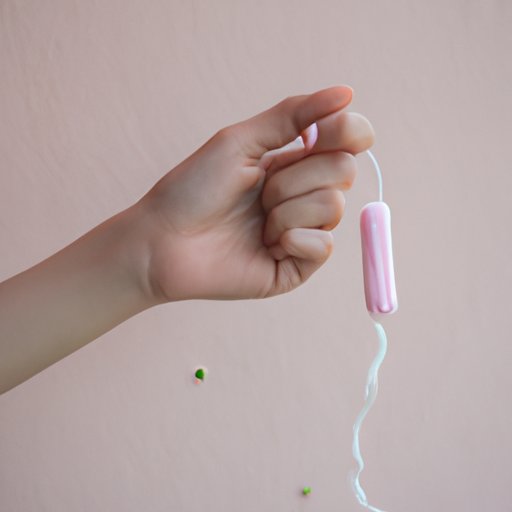Introduction
Using tampons can be tricky for beginners, but with proper guidance, it can become an easy and comfortable part of your menstrual routine. In this article, we will cover everything you need to know about tampon use to help you feel confident and comfortable during your period.
A Step-by-Step Guide for Beginners
Choosing the right size and type of tampon is the first step towards a successful experience. Tampons come in different sizes, which are usually related to your flow. If you have a heavy flow, you might want to use a super or super plus tampon. On the other hand, if you have a light flow, a regular or light tampon will work better for you.
Now that you have chosen the right size, it’s time to learn how to insert it properly. There are different comfortable positions for insertion, such as standing, sitting, or squatting. Find the position that works best for you. Wash your hands thoroughly and unwrap the tampon, but keep the applicator handy if you’re using that type.
If you’re using an applicator tampon, hold it with your thumb and middle finger, and place the rounded tip of the applicator into your vagina. Gently push the applicator until your fingers meet your body. Push the inner tube of the applicator with your index finger until the tampon is fully inserted. Finally, pull the applicator out and dispose of it properly.
If you’re using a non-applicator tampon, hold the tampon with your fingers and place the tip at the entrance of your vagina. Use your index finger to push the tampon until it’s fully inserted. Make sure the string is hanging out of your body, so you can easily remove it later.
Bust Common Myths and Misconceptions
There are several myths surrounding tampon use, including toxic shock syndrome (TSS) and discomfort during insertion. TSS is a rare but serious bacterial infection associated with tampon use. However, it’s important to know that it’s not caused by tampons themselves, but by the bacteria that can grow on them. The risk of developing TSS can be minimized by using the lowest absorbency tampon needed and changing it frequently (every 4-6 hours).
Discomfort during insertion can be easily prevented by using the correct size and lubrication. Water-based lubricants can be used for easy insertion. Additionally, taking deep breaths and relaxing your muscles can also help make the process more comfortable.
Showcase Different Types of Tampons
There are different types of tampons available on the market, including applicator, non-applicator, organic, and scented. Applicator tampons come with a plastic or cardboard applicator, which is used to insert the tampon. Non-applicator tampons don’t have an applicator and are inserted using your fingers.
Organic tampons are made from natural and non-toxic materials, making them a good option for those with sensitive skin. Scented tampons have a fragrance added to them, but they can be irritating for some people and increase the risk of infection. It’s best to use unscented tampons to avoid any irritation or infection.
Tips for Insertion and Removal
Inserting and removing tampons can take some practice, and it’s normal to feel a bit nervous at first. Here are some tips that can make the process easier:
- Take deep breaths and relax your muscles
- Use water-based lubricants for easy insertion
- Change your tampon every 4-6 hours to avoid infection
- Check the string periodically to make sure it’s not worn or torn.
- Store tampons in a clean, dry place.
Cover Proper Disposal
It’s important to dispose of tampons properly. Tampons should never be flushed down the toilet, as they can cause blockages and damage to plumbing systems. Instead, wrap the used tampon in tissue paper or a piece of toilet paper and dispose of it in the trash.
Discuss Tampon Alternatives
Although tampons are popular, there are other menstrual products that can be used as alternatives such as menstrual cups or period underwear. Menstrual cups are made of silicone and are worn internally to collect menstrual blood. They can be used for up to 12 hours and are reusable, making them an eco-friendly option. Period underwear is specially designed to absorb menstrual blood and can be machine washed and dried.
Conclusion
Tampons can be an easy and comfortable part of your menstrual routine when used properly. Choosing the right size and type of tampon, using the correct insertion and removal techniques, and proper disposal are all important factors to consider. Remember, if tampons don’t work for you, there are many other alternatives such as menstrual cups or period underwear to explore.
